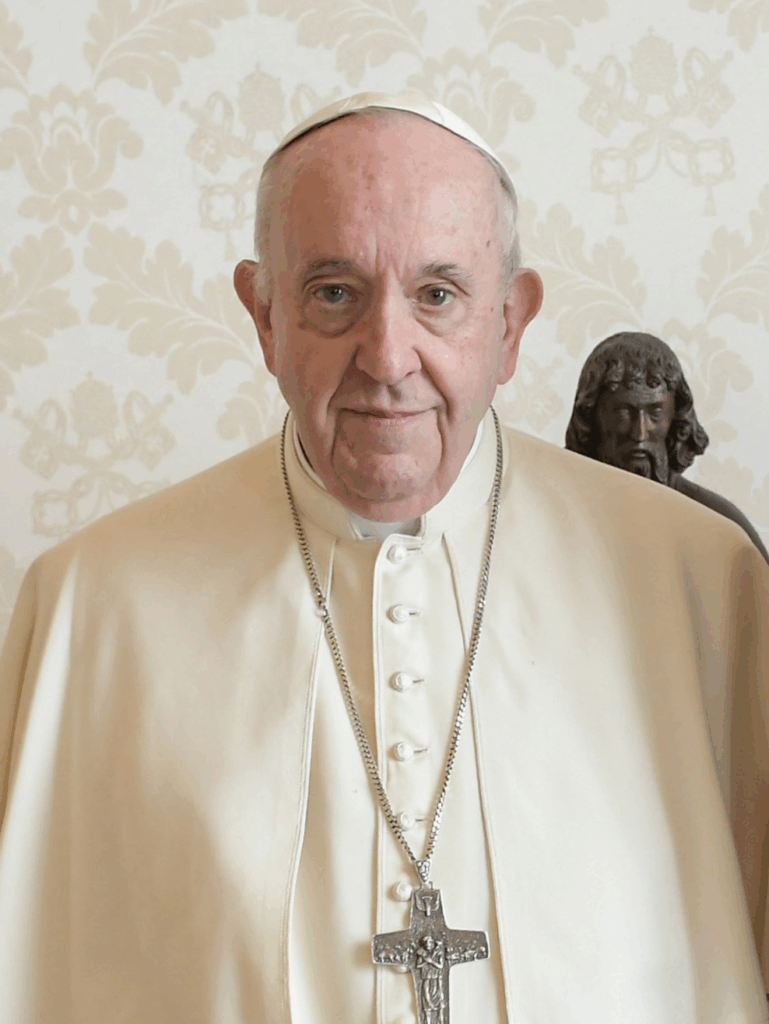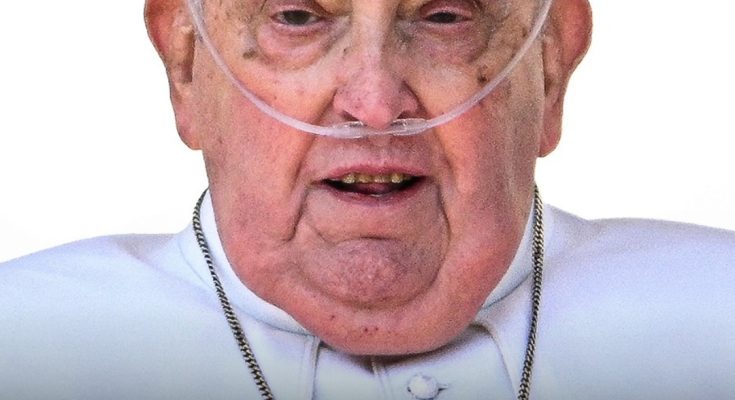From lying unresponsive to slipping into a coma and receiving a final caress from his trusted surgeon, Pope Francis’ dying hours transpired quietly and sadly. Take a closer look at how the Pontiff spent his final hours.
Sergio Alfieri, Pope Francis’ personal surgeon and coordinator of his medical team during hospitalizations, recounted the Pontiff’s final moments with a heavy heart. “His eyes were open, he didn’t answer me. There was nothing to be done,” Alfieri said of his last encounter with the Holy Father at dawn on Monday, April 21.

For the first time, Alfieri, who is the head of abdominal oncology surgery at Gemelli Polyclinic, talked candidly about the specifics and strategies that formed a friendship “of esteem and affection” with Pope Francis, which started in 2021 when he performed his first operation on the pope.
Pope Francis addressed his final days with his usual resoluteness, despite the seriousness of his sickness. Alfieri clarified that going back to work “was part of the therapy,” and the Pope never put himself in risk.
His resolve to see his mission through to the conclusion was demonstrated by his choice to interact with the public, notably by agreeing to his health care helper Massimiliano Strappetti’s suggestion to walk through the crowd in St. Peter’s Square.
Alfieri last saw Pope Francis on Easter Eve, after lunch on Saturday. “I can say he was very well, he told me so himself,” Alfieri recalled. He had brought the Pontiff a dark tart, a favorite treat, and they enjoyed a brief conversation.
“I’m very well. I started working again, and I’m up for it,” Pope Francis said, excited about delivering the Urbi et Orbi blessing the next day. They agreed to meet again on Monday.
There had been no push to keep the Pope from his duties, despite Alfieri’s original prescription of 60 days’ convalescence. “It was right,” Alfieri affirmed. “He is the Pope.”
The Pope had requested Alfieri to set up a meeting with all of the people who had cared for him at Gemelli ten days prior. Alfieri recommended delaying until after Easter, but Pope Francis refused, saying, “I’m meeting them on Wednesday.”
Alfieri now believes the Pontiff felt he had important tasks to complete before his passing. Sadly, the call that changed everything came early Monday morning. “At about 5:30 a.m. I got a call from Strappetti. ‘The Holy Father is very sick, we have to go back to Gemelli,’” Alfieri recalled.
Within 20 minutes, he arrived at Santa Marta. Entering the Pope’s room, he found him with his eyes open but unresponsive. “He did not respond to stimuli, even painful ones,” Alfieri said. “At that moment I realized that there was nothing more I could do. He was in a coma.”
Because of the high risk of death during transportation, it was decided not to transfer him to the hospital. Alfieri and the small team surrounding him, which included Strappetti, other nurses, and secretaries, remained by the Pope’s side until the very end, understanding his desire to pass away at home.
Cardinal Parolin soon arrived and led a rosary prayer. “I felt privileged and now I can say that I was,” Alfieri said. As a final farewell, he gently caressed the Pontiff.
Looking back on their past, Alfieri recalled his first encounter with Pope Francis in 2018 while serving as a consultant surgeon for the Holy See. After inviting the medical team to attend a Mass at Santa Marta, the Pope individually greeted each member of the team.
Pope Francis saw several doctors before deciding to have Alfieri perform surgery on him two years later after he started experiencing excruciating stomach pains brought on by diverticular illness. Because he was the most experienced colon-rectal surgeon in Italy, Alfieri thought the Pope had chosen him.
Their initial consultation was unexpected and brief. Alfieri saw the Pontiff departing the Vatican facility after examining the CT scan. He formally told Alfieri of his choice a few days later.
“I decided to have surgery and I chose you,” he said. Alfieri insisted the surgery be performed at Gemelli, and the Pope agreed under one condition. “I will arrive on Sunday after the Angelus. No one will have to know. If the news gets out I won’t operate anymore,” he stated.
By using a secret visit from a foreign head of state as the official cover story, the secrecy was effectively preserved. Then, right before surgery, something memorable happened.
Strappetti informed Alfieri that the Pope wished to see him. “He blessed my hands,” Alfieri revealed. The gesture, a private message between the three of them, symbolized the Pope’s encouragement to work not only with skill but also with heart.
Over time, Alfieri’s bond with Pope Francis became more solid. The Pope had to remain in seclusion for a week following the procedure due to problems.
He hosted a pizza dinner on the third day, sitting at the head of the table, which Alfieri called another privilege in life. The confidentiality of a second surgery further demonstrated the Pope’s commitment to Catholic hospitals and public health.
He returned to Gemelli after his recuperation, demonstrating his dedication in public and highlighting the importance of easily accessible Catholic healthcare.
During the Pontiff’s final hospitalization, there were nights when Alfieri feared the worst. “We knew he wanted to come home to be Pope until the last moment. And he did not disappoint us,” Alfieri said, reflecting on a life and a mission completed with dignity, purpose, and profound faith.
Pope Francis’ last hours were also characterized by nine moving words and a straightforward hand gesture of farewell to the man who had supported him during his illness, as people closest to him later disclosed.
His final known words were spoken just before he passed away: “Thank you for bringing me back to the Square.” Strappetti, the nurse who had taken on a pivotal role in the Pope’s last years, was the recipient of those remarks.
Strappetti was more than just a caregiver; he was the one who once suggested colon surgery to save the Pope’s life. In 2022, Pope Francis named him his personal healthcare assistant in recognition of his steadfast commitment.
During the Pope’s last hospital stay at Rome’s Gemelli Hospital and afterward at the Casa Santa Marta, where he kept 24-hour vigil, Strappetti stayed by his side.
Strappetti was present at the Urbi et Orbi blessing on Easter Sunday, which would be Pope Francis’ final public appearance. They had gone over the route he would take to reach St. Peter’s Basilica’s Central Loggia the day before.
Following the blessing, Pope Francis had planned to ride in the popemobile in an attempt to surprise the 50,000 worshippers assembled in the Piazza. However, he paused and asked his helper, “Do you think I can manage it?” to get advice.
Yes, he did. He went back to the square that Sunday, enjoying the crowd and giving the kids extra attention. It was his last ride in a popemobile and the first he had taken after being released from the hospital.
Turning to Strappetti, he murmured, “Thank you for bringing me back to the Square.” He was tired but satisfied. He then made clear how much he wanted to be near the people, which had been a guiding principle of his pontificate from the beginning.
He ate a peaceful meal and went to bed later that day. The following morning, around 5:30 a.m., he began to exhibit symptoms of an unexpected sickness. Pope Francis fell into a coma around an hour after the medical staff’s prompt response.
He gave Strappetti a final wave of his hand as he lay in bed on the second floor of Casa Santa Marta, just before he passed out.
Those who were there said he did not suffer. The abrupt and covert death was consistent with the Pope’s reticent attitude on his health.
Pope Francis has vowed to travel “together” with God’s people since his election on March 13, 2013. He fulfilled that vow with humility, kindness, and grace in his final hours.
It was determined that a stroke, followed by an irreversible cardiocirculatory collapse and coma, was the cause of death. The formal accreditation was given by Dr. Andrea Arcangeli, Director of the Vatican City State’s Directorate of Health and Hygiene.
The Pope had numerous bronchiectases, high blood pressure, type 2 diabetes, and severe respiratory failure from multimicrobial bilateral pneumonia, according to a report issued by the Holy See Press Office. Electrocardiographic thanatography proved his demise.



